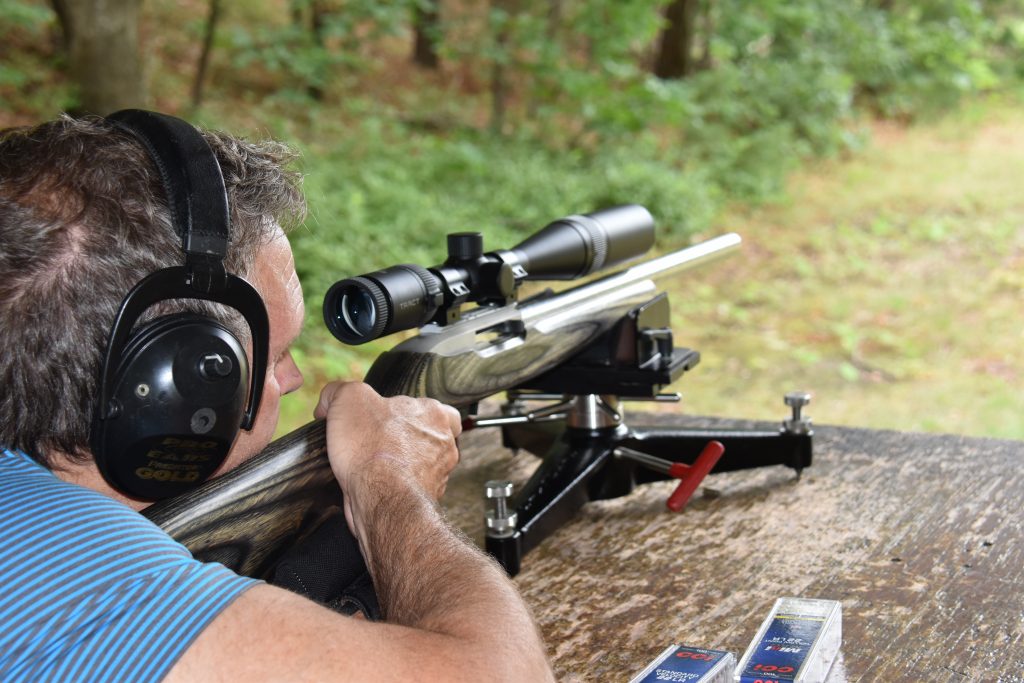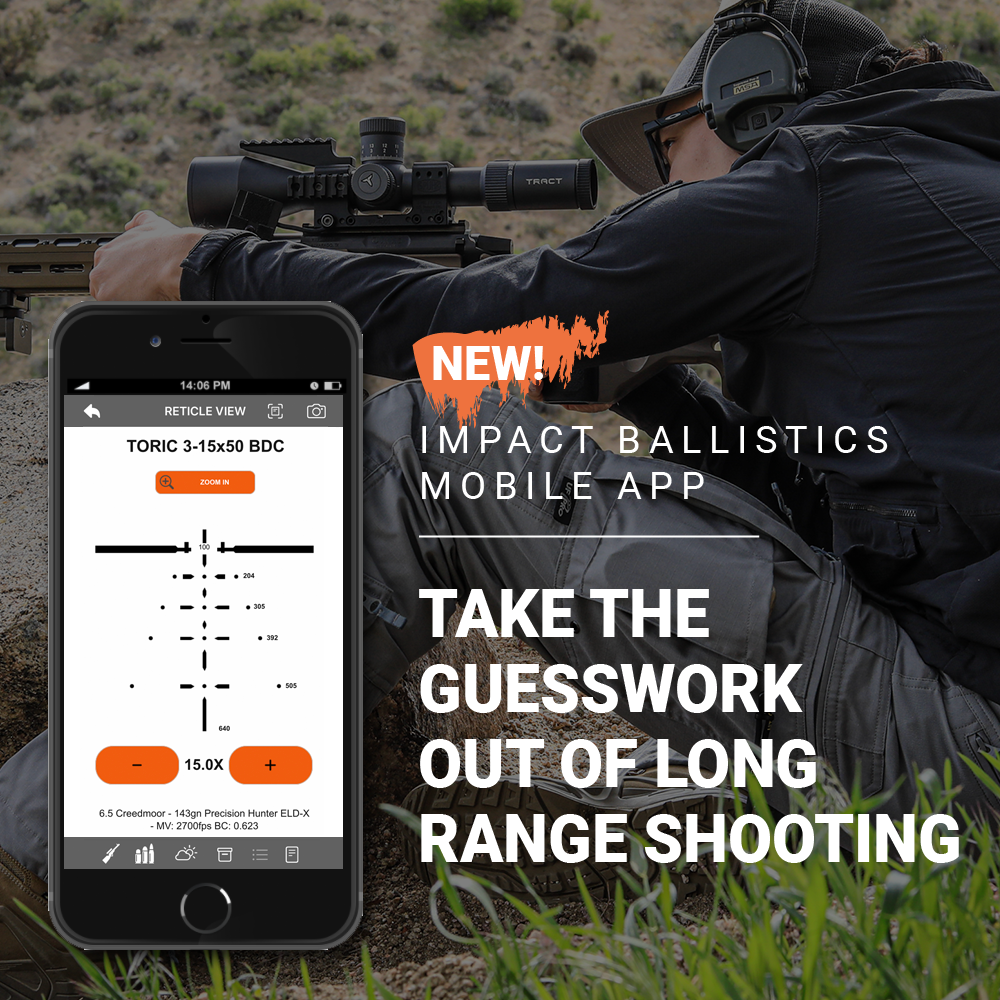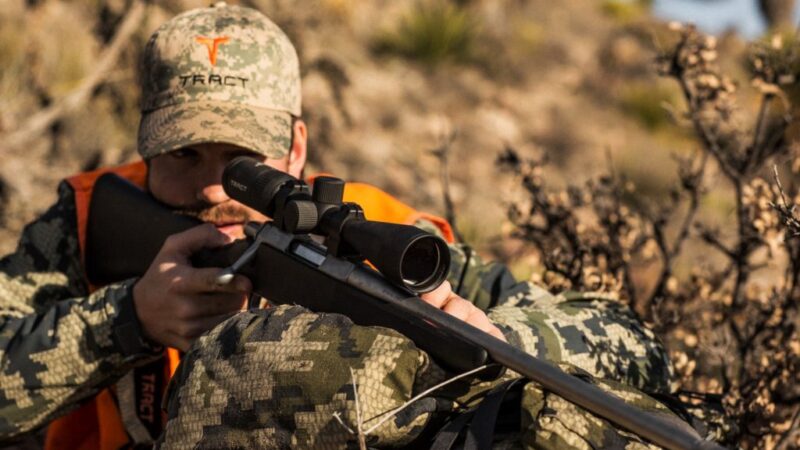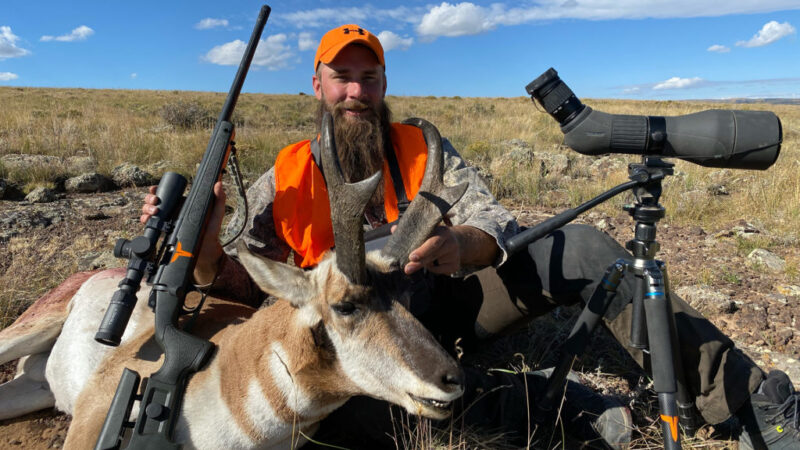Scope Sighting Made Simple
Scope Sighting Made Simple
Scope sighting can be an arduous and time-consuming task though there are methods to help make the process much more efficient.
Scope Sighting Made Simple. For many people, sighting in a rifle is a very arduous and time-consuming task. While everyone has their own way, we are going to cover the methods that we use to zero a rifle. First let’s define what sighting in or zeroing actually is. The process of sighting in or zeroing is when you adjust the windage and elevation adjustments of the scope so that the point of aim (position of the reticle) matches your point of impact (where the bullet is impacting the target). When you place the crosshair on the target, the impact of the bullet should fall where you place the crosshair. This is known as the sight in or zeroing process.
Scope Sighting Made Simple: The Gear
Let’s get started with the gear you would need. We recommend using a front pedestal or sandbag as well as rear support or sandbag. There are many options available, but with the amount of shooting and testing we do, the Sinclair Windage rest and Edgewood Rear bags are the ticket for us. Regardless of what you decide to use, the rifle should be properly supported at the forearm and buttstock. While there are many “vice” type products out on the market, our experience is that these cradles do not replicate the same type of position you are in when firing the rifle in the field and may change the harmonics of the rifle during the shot process. Avoid any type of hard surface as the rifle will tend to “kick” away from the hard surface and may change the point of impact adversely. The steadier you can position the rifle the better.

Does the Type of Target Matter Scope Sighting
A grid target makes it super easy to visually see and note the amount of adjustment necessary to zero the rifle. We prefer the diamond shaped targets as we feel it allows more precise placement of the crosshair versus a round bullseye type target, but you should use whatever you are most comfortable with. Here is an example of the target we use.
Once your scope is properly mounted (we highly recommend that you have your scope mounted by a competent gunsmith if you are not familiar with mounting scopes) we recommend that you bore sight the rifle. This can be done in many ways depending on the type of firearm you are using. If a gunsmith mounts your scope, ask him to bore sight it. While this should be a given where mounting a scope, it should not be taken for granted.
Bore Sighting Saves Time & Money
Bore Sighting is a method of aligning the reticle with the bore so that your first shots will be on the target paper at the given distance you are shooting. NOTE: Bore Sighting is only to be used to minimize the amount of adjustment used to sight in or zero the rifle. Bore Sighting should never be considered as your actual sight in or zero.
If you plan to mount the scope yourself, here are a couple of ways to bore sight the rifle. When using a bolt action rifle, remove the bolt. Peer through the barrel at a target approximately 25 yards away. With ARs, break the gun down and remove the bolt carrier group. Say the firearm does not allow you to remove the bolt and peer through the bore (such as a lever action rifle, certain semi auto’s or pump actions), then you may need to use an aftermarket bore sighting device such as an arbor style or laser style.
Bore sighting at a longer range is certainly possible, but you must be more precise. The idea is to get the reticle in line with the bore at a shorter distance. This minimizes the number of shots taken to sight in or zero the rifle. Once you can see the target centered through the barrel without moving the rifle, try to adjust the reticle by moving the windage and elevation adjustments in the proper direction to center the reticle on the target. For the moment, disregard the directions engraved on the windage and elevation adjustments. This process of aligning the reticle with the bullseye should be done when looking through the scope.

Time to Fire the Rifle
Once you have the scope bore sighted the next step would be to fire the rifle to verify the actual point of impact. Bore sighting at 25 yards should place your initial shots on the target paper at 100 yards. If the first shots are not impacting the target paper, you should consider moving closer to the target.
Here is a video that walks you through the sight in process:
Things to Remember:
– The adjustments move the point of impact of the bullet. If your shots are high, move the adjustment in the Down direction. When hitting low, move the adjustment in the Up direction. Should the rounds hit right of the bullseye, move the adjustment in the Left direction. If hitting left of the bullseye, move the adjustment in the Right direction.
– While we all have a tendency of firing one shot to save ammo and speed up the process, not all guns are as accurate as others. By firing a 3 shot group you can see what type of accuracy the gun produces. Then make adjustments based on the center of the grouping. For example, if your rifle shoots a 1.5-inch group at 100 yards, you need to determine the center of the group and make adjustments accordingly. If you fire one shot, it may cause you to make an adjustment based only on the single rounds impact. This may not be a good indication of where subsequent rounds will hit. We recommend firing 3 well-spaced shots (a hot barrel can cause flyers). Make adjustments accordingly and then fire another 3 shots.
– Take your time, rushing your shots will only result in impacts that may not be consistent with other shots. Consistency is key. Once your bullet is impacting exactly where you place the crosshair your rifle is zeroed, and you are finished. Following the above steps will help you attain a perfectly zeroed rifle like the one above.
Note: Accuracy from Rifle to Rifle Varies
If you are not happy with the size of the group your rifle is shooting, there are a few things you can do:
-Check to be sure the action screws are tight
-Assuming the scope was properly mounted, the ring and base screws should be tightened to the recommended torque setting, but check them anyway
-Try a few different brands and various loads of ammunition. Firearms may like certain ammo and not like others. Try to use ammo from the same lot.
-Clean the rifle, powder residue and copper build up can kill the accuracy of the rifle barrel










